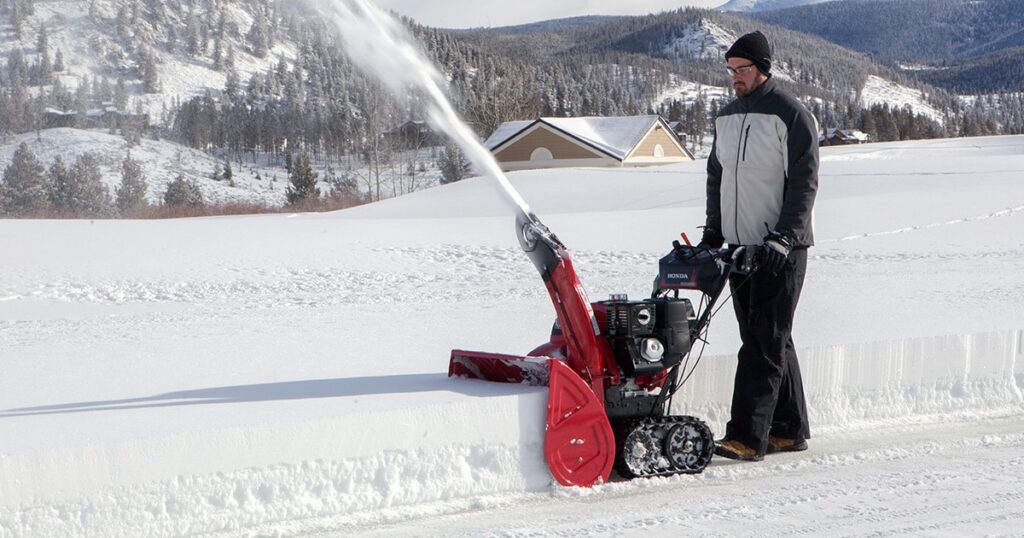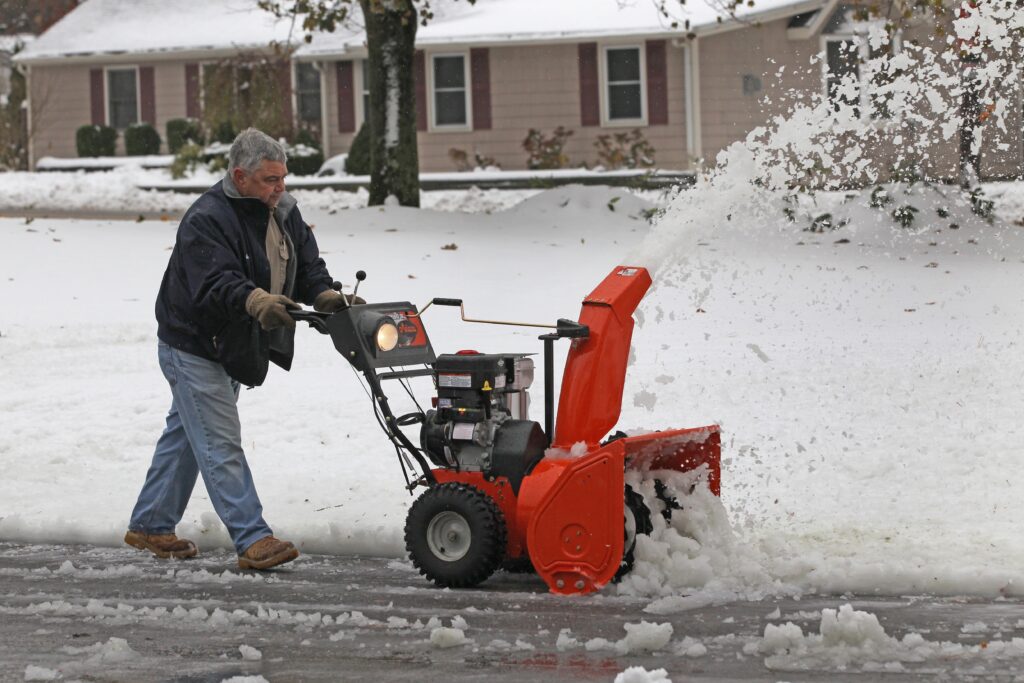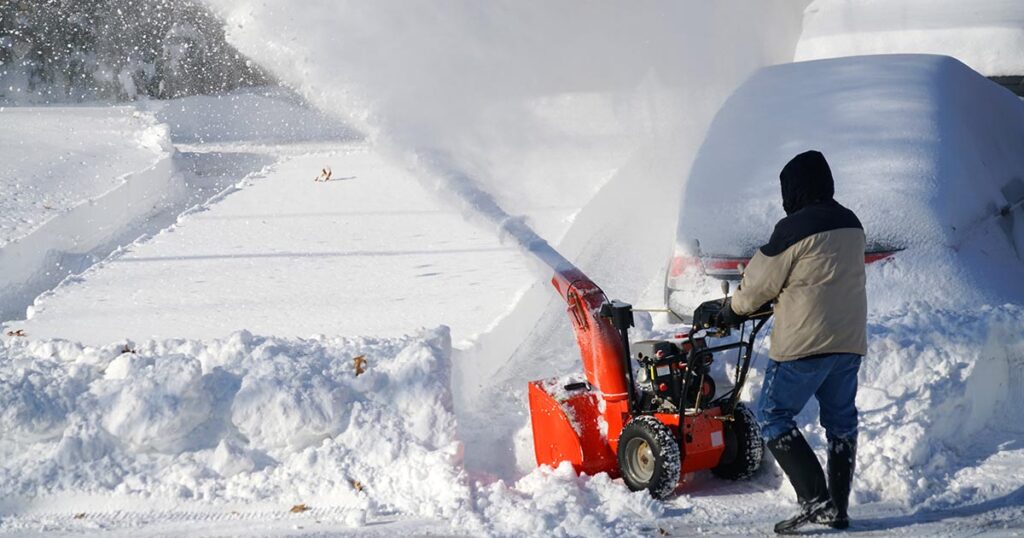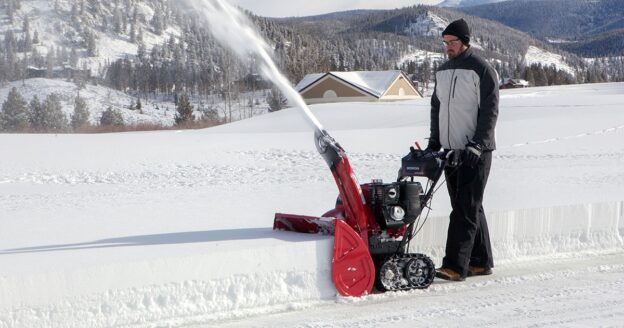If you live in an area where snowy winters are the norm, you know just how important a snow blower can be in keeping your driveways and sidewalks clear. But as you begin your search for the perfect snow blower, the question arises: how big of a snow blower do I need? Determining the right size of snow blower for your needs is crucial in ensuring efficient snow removal without wasting money or effort. In this article, we’ll explore factors such as the size of your property, the type and depth of snow you typically experience, and other considerations to help you make an informed decision on the size of snow blower that will best suit your winter needs.
Factors to Consider
Size of Driveway or Area to Clear
The size of your driveway or the area you need to clear is an important factor to consider when determining the size of a snow blower you will need. If you have a small driveway or walkway, a smaller snow blower might be more practical and easier to maneuver in tight spaces. On the other hand, if you have a large driveway or commercial area to clear, you will need a larger and more powerful snow blower that can handle the job efficiently.
Amount of Snowfall
The amount of snowfall in your area is another crucial factor to think about. Areas that receive heavy snowfall will require a more powerful snow blower to effectively clear the snow. If you only experience light or moderate snowfall, a smaller snow blower should be sufficient for your needs.
Type of Snow
The type of snow you typically encounter can also impact the size of the snow blower you need. Wet and heavy snow can be more difficult to clear than light and fluffy snow. If you often deal with heavy snow, a larger, more powerful snow blower will be more effective in handling the weight and density of the snow.
Terrain and Obstacles
Consider the terrain and any obstacles in your snow removal area. If you have a hilly or uneven driveway, a snow blower with excellent traction and stability will be necessary to navigate safely. Additionally, if there are any obstructions such as gravel, rocks, or debris, you’ll want to choose a snow blower that is designed to handle these obstacles without causing damage.
Budget
Lastly, your budget is an important factor to consider when purchasing a snow blower. Snow blowers can vary significantly in price, so it’s crucial to determine how much you’re willing to spend. Consider the long-term investment of a snow blower and weigh it against your needs to find the most suitable option for your budget.
Types of Snow Blowers
Single-Stage Snow Blowers
Single-stage snow blowers are ideal for light to moderate snowfall and smaller areas. They have a single high-speed auger that collects and throws the snow out of the discharge chute. These snow blowers are typically smaller, more compact, and easier to maneuver. They are also more budget-friendly and require less maintenance compared to larger models.
Two-Stage Snow Blowers
Two-stage snow blowers are designed to handle larger areas and heavier snowfall. They feature an auger that collects the snow and feeds it into an impeller, which then throws the snow out of the discharge chute. Two-stage snow blowers are more powerful and can handle wet and heavy snow more efficiently. They also tend to have wider clearing widths, making them suitable for medium to large driveways.
Three-Stage Snow Blowers
Three-stage snow blowers are the most powerful and efficient snow blowers on the market. They have an additional accelerator that breaks up the snow before it enters the auger, resulting in increased throwing distance and performance. These snow blowers are best suited for heavy snowfall areas or commercial use. However, they are typically more expensive and may be overkill for residential use.

This image is property of www.snowblowersdirect.com.
Choosing the Right Size
Clearing Width
The clearing width of a snow blower determines how wide of a path it can clear with each pass. The width can vary depending on the model, with smaller snow blowers having a clearing width of around 20 inches and larger ones reaching up to 36 inches or more. Consider the size of your driveway or area to clear and choose a snow blower with a clearing width that can efficiently cover the space in fewer passes.
Clearing Depth
The clearing depth refers to the maximum height of snow that a snow blower can handle. It’s essential to choose a snow blower with a clearing depth that matches the average snow depth in your area. A snow blower with a deeper clearing depth will be able to handle heavy snow more effectively.
Throwing Distance
The throwing distance of a snow blower indicates how far it can throw the cleared snow. If you have a large driveway or need to move the snow a significant distance away, choose a snow blower with a longer throwing distance to ensure the snow is moved to a convenient location.
Engine Power
Engine power is an essential consideration when choosing a snow blower. It determines the unit’s ability to handle different types of snow and the depth of the snow. Look for snow blowers with higher horsepower ratings if you regularly deal with heavy, wet snow or deep snow accumulation.
Considerations for Residential Use
Small Driveways and Walkways
For small driveways and walkways, a single-stage snow blower with a clearing width of around 20 inches is usually sufficient. These compact snow blowers are easy to maneuver and store, making them ideal for residential use. They are also more budget-friendly, making them an attractive option for homeowners with smaller snow removal needs.
Mid-Sized Driveways
If you have a mid-sized driveway, you may want to consider a two-stage snow blower with a clearing width between 24 and 30 inches. These snow blowers offer more power and efficiency than single-stage models, making them suitable for clearing larger areas efficiently.
Large Driveways and Commercial Use
For large driveways or commercial use, a larger two-stage or three-stage snow blower is recommended. Look for models with clearing widths exceeding 30 inches to maximize efficiency. These snow blowers are designed to handle heavy snowfall and large areas, offering the power and performance needed for demanding snow removal tasks.

This image is property of www.snowblowersdirect.com.
Considerations for Commercial Use
Working Hours
If you require a snow blower for commercial use, such as clearing parking lots or sidewalks, consider the working hours of the machine. Commercial-grade snow blowers are built to handle continuous use for extended periods. Look for models with durable construction and reliable engine performance to ensure they can handle the demands of your business.
Heavy Snowfall Areas
In areas with heavy snowfall, it’s crucial to choose a snow blower specifically designed to tackle those conditions. A three-stage snow blower, with its enhanced snow processing capabilities, is well-suited for commercial use in heavy snowfall areas. These models can handle large amounts of snow quickly and efficiently, minimizing downtime.
Extra Features for Efficiency
When selecting a snow blower for commercial use, consider additional features that can enhance efficiency. Look for features like power steering, joystick control, and heated handles, which can make the operation more comfortable and less fatiguing for regular and extended use.
Additional Features to Consider
Electric Start
An electric start feature allows you to start the snow blower with the push of a button, eliminating the need to pull a cord. This feature is especially beneficial in colder climates where starting a gas-powered engine can be challenging.
Headlight
A built-in headlight can be incredibly useful when clearing snow in low light conditions, such as early mornings or evenings. It provides better visibility and improves safety during operation.
Joystick Control
Some snow blowers have joystick controls instead of traditional chute controls. This feature allows for more precise and effortless adjustment of the snow discharge direction, making it easier to maneuver the snow blower.
Power Steering
Power steering is a valuable feature, especially for larger snow blowers. It reduces the effort required to turn the machine, allowing for smoother and more comfortable operation. This feature is particularly useful in areas with tight corners or obstacles.
Heated Handles
Heated handles provide warmth and comfort during cold winter months. They help to prevent your hands from becoming uncomfortably cold while operating the snow blower, allowing you to work for extended periods without discomfort.

This image is property of www.boston.com.
Maintenance and Storage
Cleaning
Proper cleaning after each use is vital to keep your snow blower in good working condition. Remove any debris or stuck snow from the auger, impeller, and chute. Pay attention to the manufacturer’s instructions on how to clean and maintain your specific snow blower model.
Lubrication
Regular lubrication of moving parts, such as the auger and chute, is essential to prevent rust and ensure smooth operation. Follow the manufacturer’s recommendations regarding lubrication intervals and the type of lubricant to use.
Fuel Stabilization
If you have a gas-powered snow blower, fuel stabilization is crucial, especially during periods of storage or when not in use for extended periods. Using a fuel stabilizer will help prevent fuel deterioration and keep the engine running smoothly when you need it most.
Storage
Proper storage of your snow blower is crucial to protect it from the elements and extend its lifespan. Store your snow blower in a dry and covered area, away from moisture and extreme temperatures. Follow the manufacturer’s instructions for long-term storage, including any necessary fuel draining or engine maintenance.
Cost
Price Range
Snow blower prices can vary significantly depending on the size, brand, and features offered. Single-stage snow blowers typically range from $300 to $700, while two-stage snow blowers can range from 0 to ,000 or more. Three-stage snow blowers, being the most powerful and feature-rich, can range from $1,500 to $3,000 or higher.
Long-Term Investment
While the initial cost of a snow blower may seem significant, it’s essential to weigh it against the long-term investment. Consider the potential savings in time and effort compared to manual snow removal methods. Additionally, a high-quality snow blower, properly maintained, can last for many years, making it a worthwhile investment for homeowners in snowy regions.

This image is property of cdn.thewirecutter.com.
Testing and Reviews
Read Customer Reviews
Before making your final decision, take the time to read customer reviews of the snow blower models you are considering. Pay attention to feedback on performance, reliability, ease of use, and any potential issues reported by other customers. These reviews can provide valuable insights and help you choose a snow blower that meets your specific needs.
Consult Experts
If you’re still unsure which snow blower size or model is best for you, consider consulting experts in the field. Local dealerships, snow removal professionals, or even online forums dedicated to snow blowers can offer valuable advice and guidance based on their expertise.
Consider Local Recommendations
Lastly, consider seeking recommendations from local friends, neighbors, or family members who live in similar snowfall conditions. They may have firsthand experience with different snow blower models and can provide insights on which ones work well in your specific region.
Conclusion
Choosing the right size snow blower is crucial to efficiently and effectively clear snow from your driveway or other areas. Factors like the size of the area, amount and type of snowfall, and terrain all play a role in determining the size and type of snow blower that will best suit your needs. Consider your budget, the additional features you desire, and read reviews or consult experts to make an informed decision. Whether you have a small residential driveway or need a commercial-grade snow blower, there is a size and model available to help you conquer the winter weather with ease.

This image is property of gardenerspath.com.
